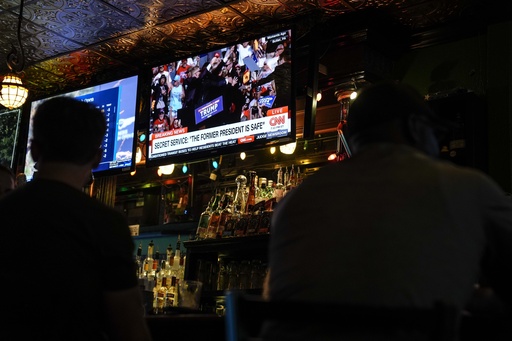The images filled television screens across a rattled country on a hot Saturday evening — former President Donald Trump reaching for his bloodied ear as he moved down to the floor of a stage at a Pennsylvania campaign rally and U.S. Secret Service agents rushing to surround him.
While the video was instantly available and repeated dozens of times, its meaning was not as evident. And viewers watched the painstaking process of reporters rushing to fill in the blanks of a political assassination attempt.
“It’s really, really a scary moment in American history,” CNN’s Wolf Blitzer said.
The coverage started immediately
News and broadcast networks began lengthy coverage within moments — as soon as it was apparent that something terrible had happened. What unfolded was a textbook example of the ultimate test for journalists as a big story unfolds: trying to get reliable information as quickly as possible while taking care not to speculate, be overheated or pass on unfounded rumors.
When The Associated Press issued its first alert of the news, at 6:16 p.m. Eastern, it stuck strictly to what could be seen: “Donald Trump escorted off stage by Secret Service during rally after loud noises ring out in crowd.” Similarly, The New York Times’ first word described Trump rushed offstage “after pops that sounded like gun shots were heard.”
In other words: Don’t assume what on its face may seem obvious.
In the early minutes, CNN and others relied on former Secret Service agents to describe how the protective detail responded in Pennsylvania, examining audio from the scene to tell viewers that Trump being whisked off the stage was a sign they believed the immediate threat had passed.
“When a president or presidential figure faces an assassination attempt, the nation is on edge,” said CBS News’ Robert Costa.
NBC News’ Lester Holt and reporter Tom Winter illustrated the care necessary in the situation, telling viewers their source when reporting that the alleged shooter had been killed.
The information indicated, Winter said, that investigators could begin their work of identifying the shooter and trying to find a motive. Asked by Holt about the likelihood that a second shooter was involved, Winter said that’s not often the case — but made sure not to get ahead of what was already known.
“There is a lot of information, a lot of things fluid,” Winter said.
Responding to a situation full of pressure
One passage on CBS showed the competing impulses felt in a pressurized situation. “We’re being very careful” in what we can report, network anchor Adriana Diaz said. That was followed immediately by a colleague passing on an eyewitness account of “a man shot with brain matter on the ground.”
While the video received constant play — in some cases annotated so it was clear to viewers what was being said in the aftermath — networks also displayed still shots, which were frequently more arresting.
On several networks, reporters interviewed people at the rally to find out what they had seen, and what their impressions were. At least one interviewee was honest about her sources.
Asked by a Fox News reporter if she had seen any blood on the former president, the person said, “I talked to ABC News and they said there was.”
___
David Bauder writes about media for the AP. Follow him at http://twitter.com/dbauder.
Source: post





